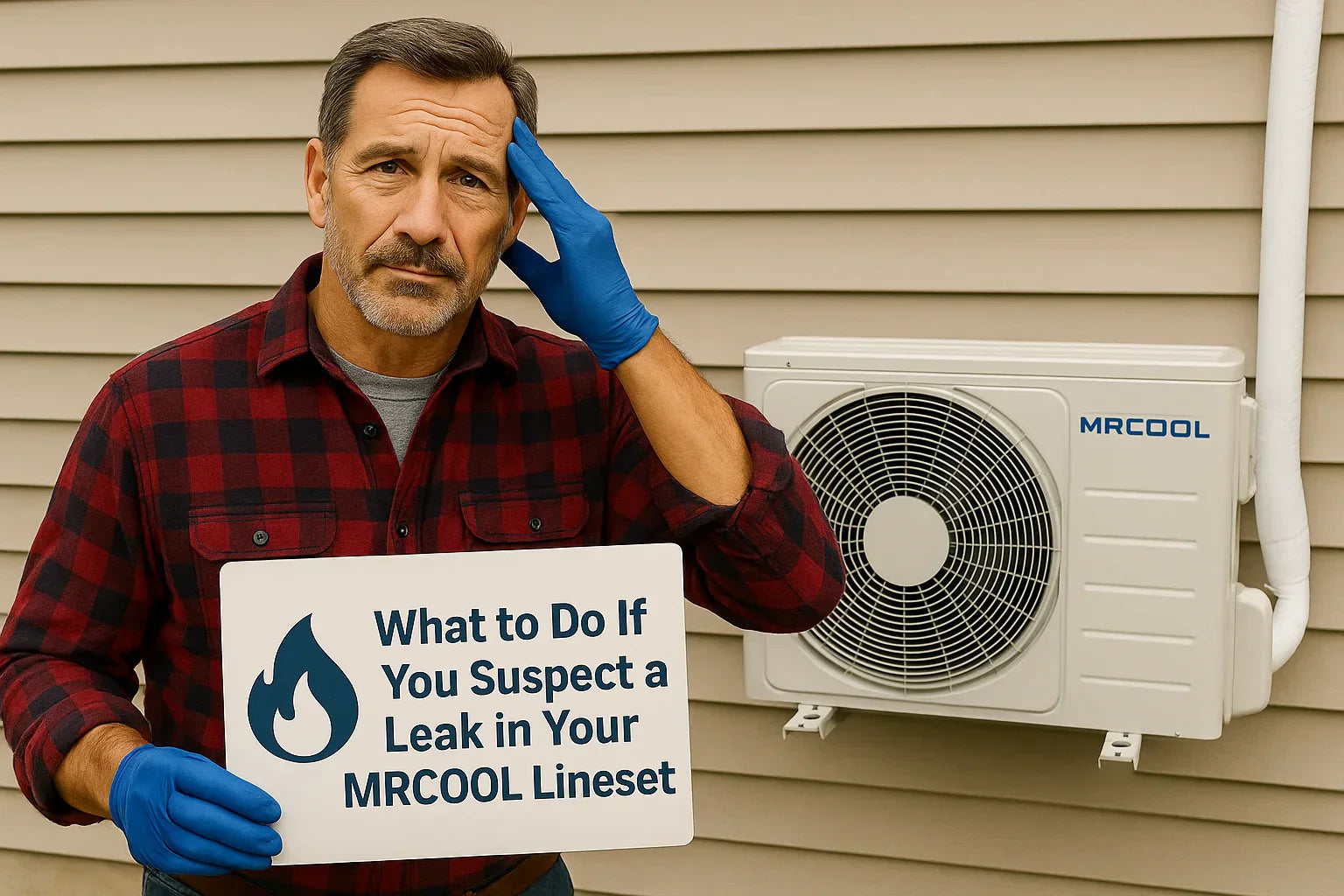DIY Detection & Next Steps for the Savvy Homeowner (Hey Mike, this one’s for you!) for your MRCOOL 5th Gen 50ft 1/4” x 1/2” Pre-Charged Lineset - DIY50-1412C-O
1. Why a Leak Pays to Catch Early
-
Garden-variety DIY pleasure meets gas escape: refrigerant leaks reduce system efficiency and drive up energy bills.
-
Invisible leaks coat compressors with oil, pump strain, and risk full breakdowns.
-
Some refrigerants are regulated—leaks might breach local environmental rules.
-
Addressing problems early keeps your MRCOOL warranty valid.
2. Signs You Might Have a Leak
-
Frost lines or ice buildup on copper tubing—not normal outside—points to refrigerant loss.
-
Oil stains or dark smudges around connectors signal ejected compressor oil.
-
Weak cooling/heating, or unexplained spikes in energy usage.
-
Hissing sounds or unusual noise near Quick‑Connect connections.
3. DIY Leak Detection Methods
A. Visual & Olfactory Inspection
-
Look for oil residue or corrosion around fittings.
-
Feel for cold spots on the lines—potential leak zones.
-
Check for bubbling moisture or oddly wet spots.
B. Soap Bubble Test
-
Mix soap + water in spray bottle.
-
Spray connectors (indoor/outdoor) and valve caps.
-
Wait ~5 minutes—bubbles = leak.
-
If found, tighten fitting slightly, wait again.
MRCOOL’s manuals advise quick bubble-checks post‑startup and after opening valves
(Finding Leaks in an HVAC System: Methods and Techniques)
C. Electronic Refrigerant Sniffer
-
Handheld detectors “sniff out” leakage—more sensitive for invisible leaks support.mrcool.com.
D. Advanced Methods (optional)
-
UV Dye Testing – added by pros when leaks are elusive
-
Nitrogen Pressure Test – hook up dry nitrogen to 400 psi+, soap-check potential leak points .
4. What to Do If You Find a Leak
-
Confirm fit: tighten fitting gently (about 1/8 turn).
-
Retest with soap spray—no bubbles = success.
-
Inspect O‑rings and threads—replace damaged parts if needed.
-
Retighten and test again.
-
If still leaking or refrigerant lost from system, you may need a replacement pre‑charged lineset or professional help
DIY® Multi-Zone 4th GEN Do-It-Yourself Ductless Mini-Split Heat Pump A/C
5. Replacing Leaked Linesets
If the leak is in the lines:
-
Get a matching MRCOOL pre‑charged lineset (same length/type).
-
Shut down power and close refrigerant valves (What to do With Leaking Line Sets on the MrCool DIY? )
-
Disconnect old lines, install new kit following MRCOOL’s torque and torque-chek guidelines .
-
Open valves, bubble-test again, then restart system.
If you lost refrigerant beyond the lineset, an HVAC tech will vacuum the system and recharge—DIY cannot add refrigerant legally or safely .
6. When a Pro Should Be Involved
-
Leak persists after tightening/replacing fittings.
-
Refrigerant lost from condenser/indoor sections.
-
System malfunctioning or showing pressure issues.
-
You need proper vacuuming and refrigerant charging.
Note: Any service involving refrigerant transfer in the system requires a licensed HVAC technician.
7. Prevent Leaks in the First Place
-
Clean fittings before assembly—dirt sabotages seals
-
Use proper torque: snug + slight turn, no threads-heavy force .
-
Wrap and insulate joints per MRCOOL steps (DIY® E Star™ Series 3RD GEN Do-It-Yourself Ductless Mini-Split Heat Pump A/C)
-
Leave lines exposed for easy visual-inspection
-
Avoid hiding connections in inaccessible walls .
8. Long-Term Monitoring & Maintenance
-
Initial check after startup and again next day.
-
Bi-annual soap bubble check as part of seasonal maintenance.
-
Clean insulation tape and surface grime to expose potential issues.
-
Keep records of checks—helpful if warranty site visit occurs .
9. Preventing Future Leaks: Best Practices
-
Avoid kinks that stress lines or seals.
-
Anchor every 4 ft, especially across horizontal spans.
-
Watch for vibration—use deadening pads or straps.
-
Protect from UV and pests: covers or insulation guards help.
✅ Mike’s Quick Recap
-
Watch for frost, bubbles, oil, noise, or poor performance.
-
Soap bubble test fittings early and often.
-
Tighten gently; inspect o‑rings.
-
Replace lines if damaged, but call a pro for recharge.
-
Stay consistent: schedule checks, maintain insulation, and document everything.
In the next topic we will read more about: Can You Reuse MRCOOL Pre‑Charged Linesets? What the Manufacturer Really Says







